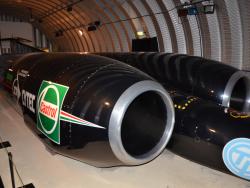Better known as the "Spruce Goose," the Howard Hughes Flying Boat was designed and built by Hughes Aircraft Co., to be the largest wood-constructed and the largest wingspan airplane ever built. As Hughes perfected his craft, he added significantly to what is known in areas of large-lift capability and power-boost systems. Originally designated the HK-1 in 1942, it was designed to meet wartime troop and material transportation needs (flying just high enough to evade submarine attacks).
Mechanical
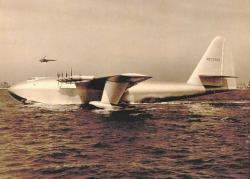

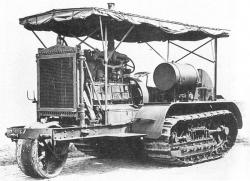
The first practical demonstration of this tractor took place in a peat field on Roberts Island on November 24, 1904, and was patented and in production by December of 1907. The existing machine represents the earliest gasoline-powered track-type tractors that were to help revolutionize agriculture, logging, construction, road building, and transportation around the world. Its design and development is credited to Benjamin Holt (1849-1920), president of the Holt Manufacturing Company of Stockton.
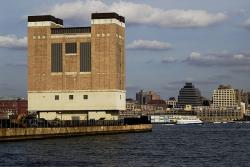
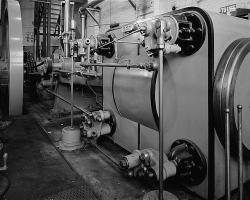
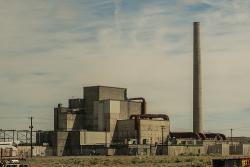
The Hanford B-Reactor was the first plutonium production reactor to be placed in operation. Its success made possible the subsequent development of atomic energy. The research work, engineering, and planning required to make the reactor operate is one of our most advanced achievements. Much of the reactor core, cooling system, shielding, and auxiliary systems were designed by mechanical engineers.
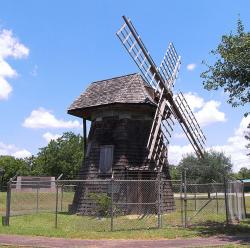
This is an old technology brought here by new immigrants. It represents the beginning of modern life in a hard wilderness. This wind-powered gristmill was built in 1870 by Fred Meiss, Jr., and Otto Fiek near Spring Creek, from parts of the first windmill in the new state of Texas, erected by E.G. Witte. The millstones are the ones Witte imported from Europe and are believed to be one of the earliest sets in the United States to survive.
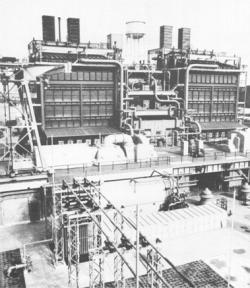
On April 21, 1949, a completely outdoor turbine-generator was placed into commercial operation at the Greens Bayou electric power plant--the first fully outdoor unit to operate in the United States. The demand for unprecedented quantities of electricity after World War II pressed utilities to provide addition power quickly. The outdoor design, unlike the traditional large turbine hall, resulted in significant reductions in the cost per kilowatt to build the plant.
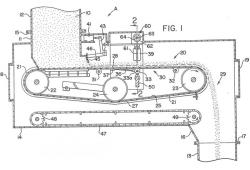
A variety of mechanical feeders, including drag-chain conveyors and rotary pocket feeders, historically have been used to volumetrically control the flow of fuel to coal pulverizers on power generators. Most power generation in the United States has relied on burning fossil fuels in steam boilers, with coal as the fuel of choice. By the 1920s, pulverized-firing (the burning in suspension of finely ground coal particles) evolved as means to more complete fuel combustion and higher system efficiencies and facilitated the use of larger boilers.
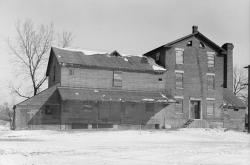
Innovations
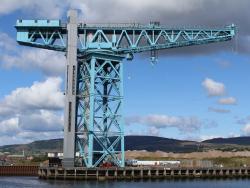
The Titan is a 200-ton electrically driven hammerhead cantilever crane, the earliest survivor of this type. It is now all that remains of the once great John Brown Shipyard in Clydebank near Glasgow where many of the world's great ships were built. Designed and constructed by Sir William Arrol…
Read More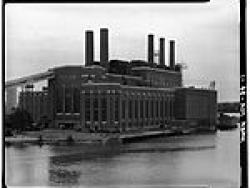
The Edger station was the first steam electric plant produced that could tolerate over 1000 psi of pressure. Initially conceived by Mr. Irving Edwin Moultrop, then Assistant Superintendent, Construction Bureau of the Edison Electric Illuminating Company of Boston. He guided his company and the…
Read More
The Belle Isle gas turbine was installed in 1949 and was the first gas turbine built in the United States for the purpose of generating electric power. Its low cost and consistency aroused considerable interest in the electric utility industry, both here and abroad. This led ultimately to the…
Read More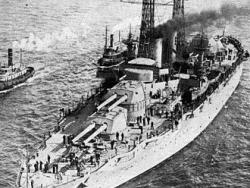
The U.S.S. Texas is the last surviving warship of its kind--powered by reciprocating steam engines. It was built during a period in which naval authorities were switching to the newly-developed steam turbine for propulsion, but were unsure of its suitability. Only one more warship, the New York…
Read More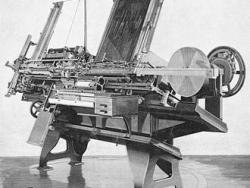
The Paige Compositor was an invention developed by James W. Paige (1842–1917) between 1872 and 1888. It was designed to replace the human typesetter of a lead type-composed printing form with a mechanical arm. In the early 1890s, a group of inventors signed a contract with Towner K.…
Read More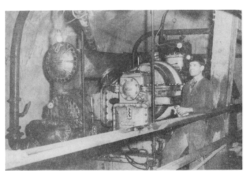
The Magma Copper Mine AC system designed by the Carrier Corporation was the first underground mechanical air conditioning system in North America. The initial installation of refrigerated cooling equipment in the Magma Mine at Superior, Arizona was necessary due to the increase in temperature…
Read MoreThe Broadmoor Manitou and Pikes Peak Cog Railway (also known as the Pikes Peak Cog Railway) is a cog railway that climbs one of the most iconic mountains in the United States, Pikes Peak in Colorado. The base station is in Manitou Springs, near Colorado Springs.
Construction on the line…
Read More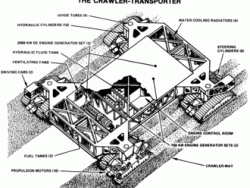
The crawler-transporters, formally known as the Missile Crawler Transporter Facilities, are a pair of tracked vehicles used to transport spacecraft from NASA's Vehicle Assembly Building (VAB) along the Crawlerway to Launch Complex 39. They were originally used to transport the Saturn IB and…
Read More

